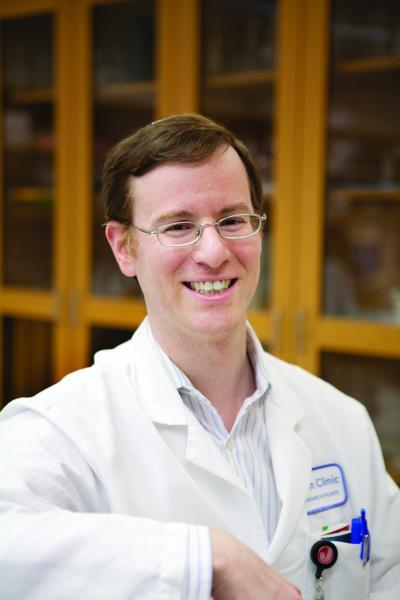BOSTON – March 22, 2013 – Joslin scientists report significant findings about the location, genetic expression and function of human brown adipose tissue (BAT) and the generation of new BAT cells. These findings, which appear in the April 2013 issue of Nature Medicine, may contribute to further study of BAT's role in human metabolism and developing treatments that use BAT to promote weight loss.
Two types of adipose (fat) tissue – brown and white -- are found in mammals. Unlike the more predominant white adipose tissue (WAT) which stores fat, BAT burns fat to produce heat when the body is exposed to cold and also plays a role in energy metabolism. Human studies have shown that greater quantities of BAT are associated with lower body weight. BAT has been a major focus of study among scientists and pharmaceutical companies based on its potential as a treatment to combat obesity, a major risk factor for type 2 diabetes.
Studies in mice have identified two types of BAT: constitutive or "classical" BAT which is present at birth and persists throughout life and recruitable or "beige" BAT which can be produced from within white fat in response to metabolic conditions. These two types of BAT may also be present in humans.
Previous studies have identified the human neck as a primary location for BAT deposits. To determine the precise locations of these deposits, Joslin scientists obtained fat samples from five neck regions of patients undergoing neck surgery. Analysis of the samples showed that BAT was most abundant in deep regions of the neck, near the carotid sheath and longus colli muscles. These samples expressed the BAT marker gene, uncoupling protein 1 (UCP1), which is involved in heat generation. "BAT is most abundant in the deep locations of the neck, close to the sympathetic chain and the carotid arteries, where it likely helps to warm blood and raise body temperature. Now that we know where brown fat is, we can easily collect more cells for further study," says Aaron M. Cypess, M.D., Ph.D., senior author and Assistant Investigator in the Section of Integrative Physiology and Metabolism and Assistant Professor at Harvard Medical School.
In analyzing genetic expression in superficial and deep human neck fat tissue, the fat from deep locations was found to most closely resemble cells from constitutive mouse BAT, the kind already known to consume large quantities of glucose and fat.
The Joslin scientists compared the oxygen consumption rate (OCR), which demonstrates the capacity to burn calories, of human BAT cells to mouse constitutive BAT cells and human WAT. This is the first study to directly measure brown fat cells' OCR at baseline. The OCR of the human BAT cells from the deep location next to the longus colli was nearly 50 percent of the mouse BAT cells; in contrast, the OCR of human WAT was only one-hundredth of the OCR found in the most active human BAT from the longus colli depot. "We show that at baseline, brown fat cells have a great capacity to burn fat," says Dr. Cypess.
The scientists were able to grow new functional brown fat cells (adipocytes) by differentiating precursor cells (preadipocytes) derived from both superficial and deep human neck fat tissue. When stimulated, the cells expressed the same genes as naturally occurring brown fat cells. This is the first report of the production of brown fat cells (adipogenesis) that can respond to pharmacological stimulation.
The Joslin scientists are following up on this study to learn more about the functions of BAT, including how it affects energy balance and uses glucose. Having the ability to produce brown fat cells outside the body will make it possible to develop drugs and other potential treatments that increase BAT activity to combat obesity. "Our research has significant practical applications. If we stimulate the growth of brown fat in people, it may burn their white fat and help them lose weight, which lessens insulin resistance and improves diabetes," says Dr. Cypess.

Aaron Cypess, M.D., Ph.D., Joslin Diabetes Center, is Assistant Investigator in the Section on Integrative Physiology & Metabolism and Assistant Professor of Medicine at Harvard Medical School.
(Photo Credit: John Soares)

Joslin scientists report significant findings about the location, genetic expression and function of human brown adipose tissue (BAT) and the generation of new BAT cells. These findings, which appear in the April 2013 issue of Nature Medicine, may contribute to further study of BAT's role in human metabolism and developing treatments that use BAT to promote weight loss.
(Photo Credit: Joslin Communications)
Source: Joslin Diabetes Center